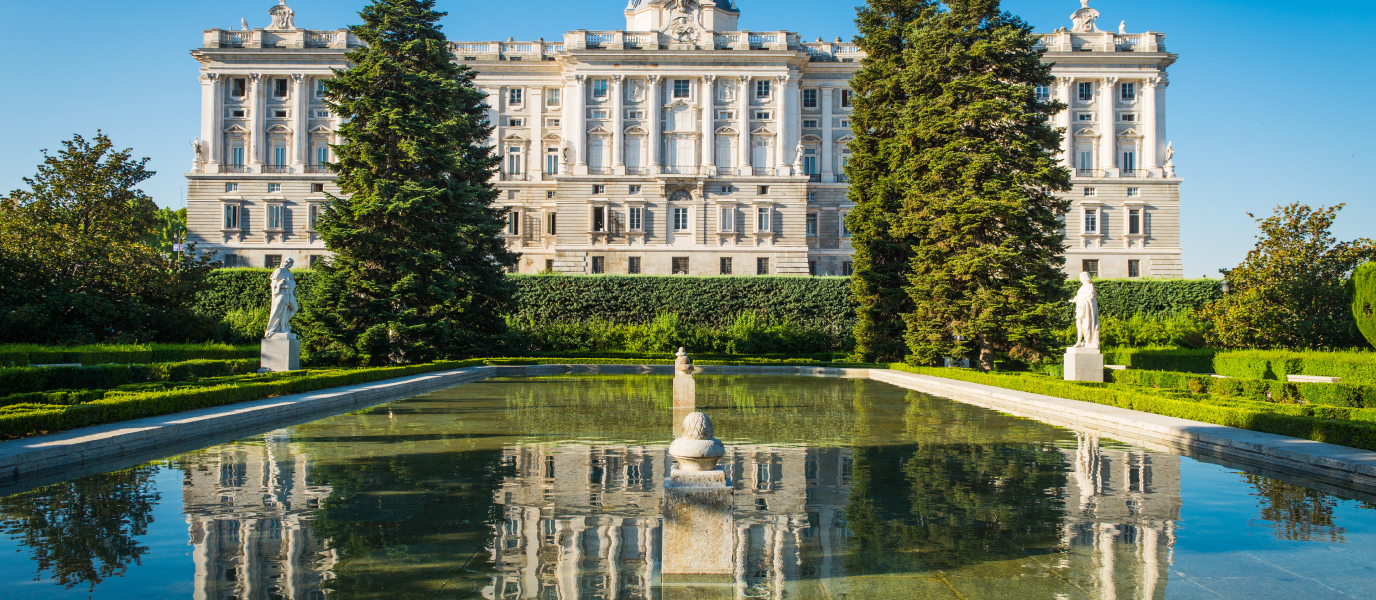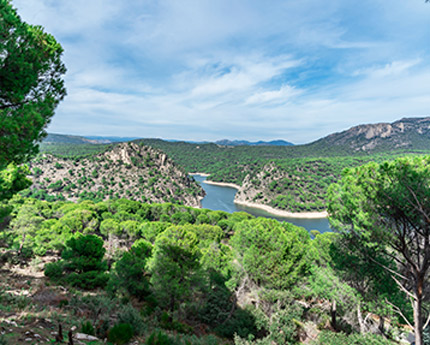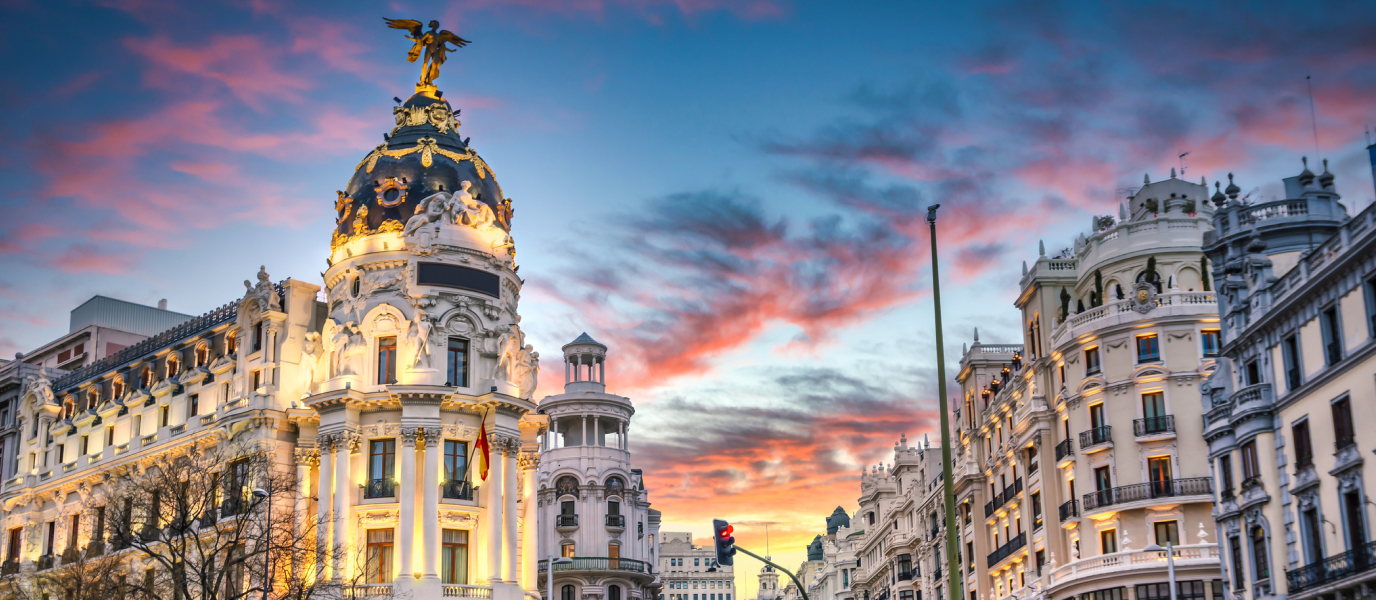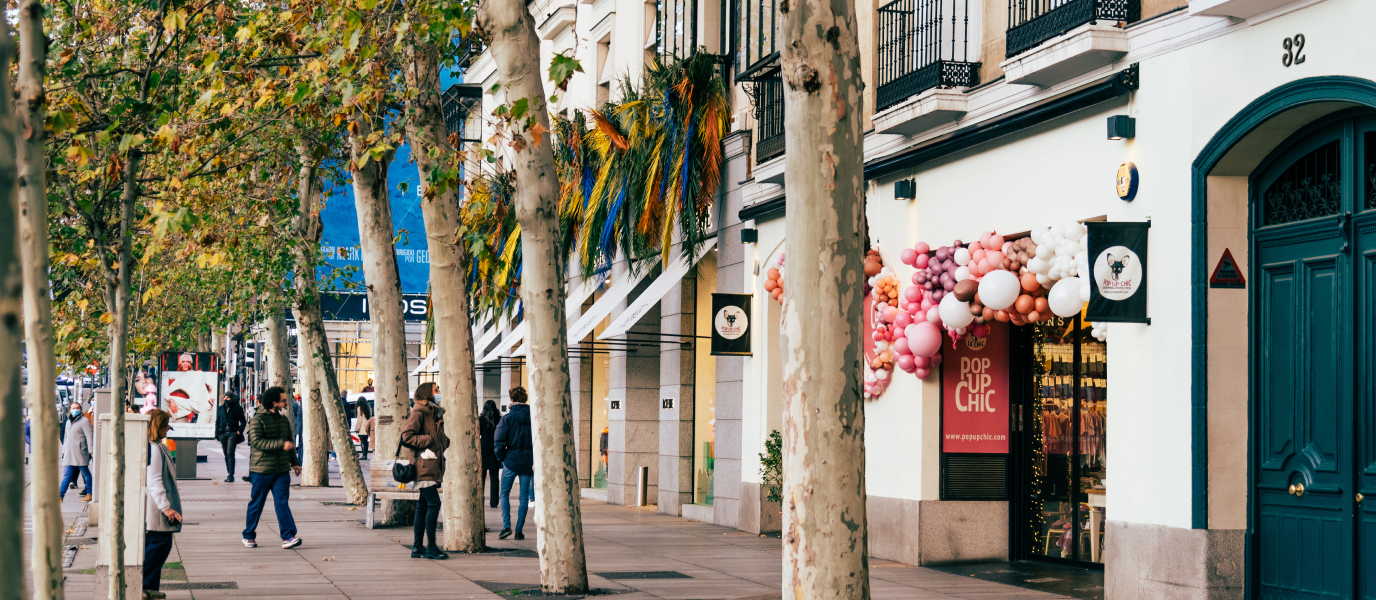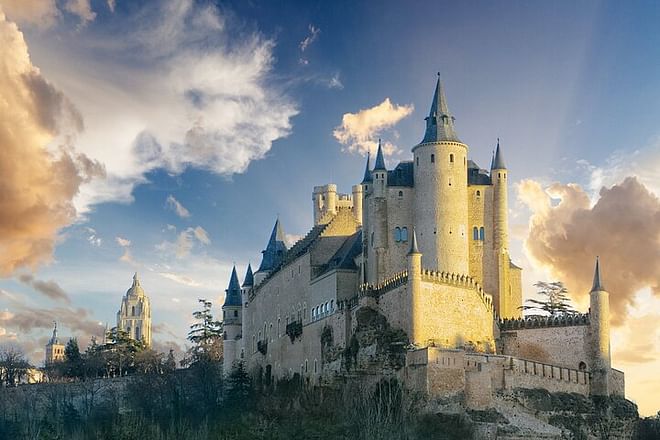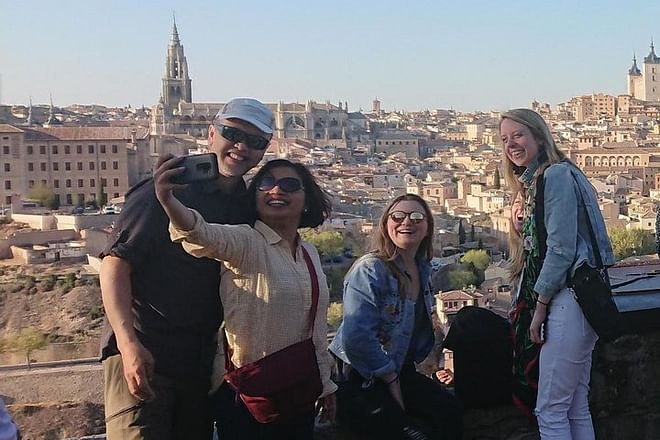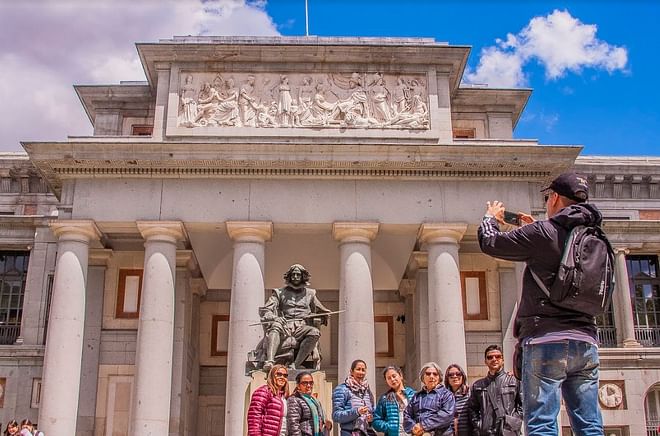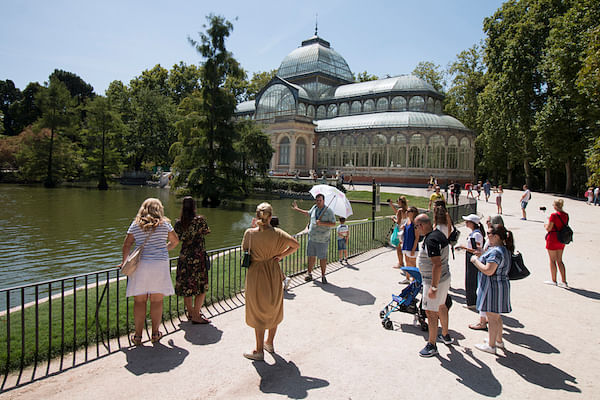Contrary to what you might think, the Sabatini Gardens weren’t actually designed by Francesco Sabatini. In fact, these gardens under the care of the adjoining Royal Palace were created well into the twentieth century when the recently established Second Spanish Republic confiscated the Crown’s property for the good of the people. Its markedly French classicism blends in well with the other nearby gardens—Campo del Moro, Jardines del Cabo Noval and Jardines de Lepanto—that surround the magnificent palace. The Sabatini Gardens are considered to be one of the best spots in the city to watch the sun go down in Madrid. This comes as no surprise when you realise that the gardens sit on the very place where Moorish troops established an observation post when the city of Madrid was born over a thousand years ago.
That’s why, in addition to enjoying the garden itself, one of its big attractions is the huge number of historic sites that surround it, including the Royal Palace, Teatro Real, Templo de Debod and the Almudena Cathedral.
The history of the gardens
The area where the gardens now lie has been the site of defensive constructions since the ninth century, beginning with the primitive fortress built by Emir Muhammad I in 856 and continuing to the later Real Alcázar and finally the Royal Palace. The Royal Palace was completed in 1752 but many years would pass before it was joined by the Sabatini Gardens.
To explain the paradox of its name, the gardens are called ‘Sabatini’ because they were built on land that was used in the eighteenth century as the palace’s Royal Stables. And these stables were built by Francesco Sabatini, one of the great Madrid architects of the Habsburg period and father of iconic monuments such as the Puerta de Alcalá.
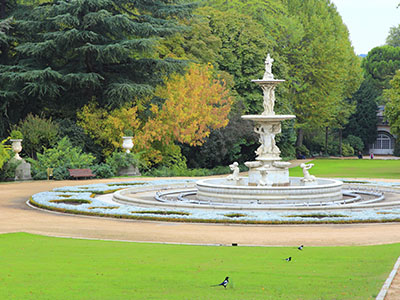
One of life’s ironies is that the real architect of the gardens, Fernando García Mercadal, has now been forgotten despite being responsible for their construction in 1932. A tumultuous period during the twentieth century followed, when the Second Spanish Republic exiled the then monarch, King Alfonso XIII, and later seized the property of the Crown in the name of the Spanish people. The Royal Stables were one of these confiscated possessions and after being demolished by decree, they made way for the Sabatini Gardens.
The Spanish Civil War interrupted the creation of the gardens and they weren’t opened until 1950. They were refurbished in 1972 and the entrance staircase was replaced by a more monumental design; in 1978, as democracy took its first baby steps in Spain, the gardens were finally opened to the public by King Juan Carlos I.
A brief description of the Sabatini Gardens
The Sabatini Gardens have a formal Neo-classical style that is evident in the use of symmetrical geometric patterns that are formed by well-trimmed hedges and meticulously positioned trees. However, the true star of garden is its pond; it has three discreet fountains and the edges are dotted with a series of statues of Spanish kings.
As is often the case with monuments that have a long history, the gardens have many fascinating stories and secrets that are a joy to discover. For example, its creators looked for inspiration in the old plans for the Royal Palace by architects such as Giovanni Sacchetti, Ventura Rodríguez and Francesco Sabatini, who in turn had sought inspiration from the gardens of Versailles. The statues surrounding the pond originate from a collection of a hundred sculptures that were made when the Royal Palace was constructed. The statues turned out to be too heavy and ended up being distributed across other parks in Madrid: the Parque del Retiro and the Parque del Capricho, for example.
And if you keep your eyes peeled, you’ll spot the most important statue of all, a figure who has his back to the huge staircase that presides over the garden. It represents King Charles III in a calm and self-assured pose, the monarch popularly known as the “best mayor of Madrid”.
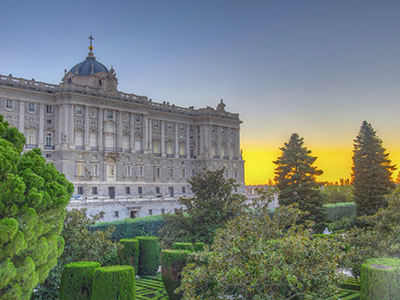
One of the finest sunsets is at the Sabatini
Yes, you’ve read that correctly. Many locals believe that the sunsets you can watch from the Sabatini Gardens are the best to be seen in Madrid. Perhaps this is because they’re enjoyed in an outstanding setting that is calm and peaceful, away from the bustling city, and when the sun goes down you’ve given a unique view of the Royal Palace with the Casa de Campo in the distance. The fading light hits the north façade of the complex, turning its normally grey stone to shades of yellow and red, and imbuing the garden with a beautiful feeling of melancholy.
The gardens are visited by numerous people each day, local residents and tourists alike. And a stroll along its parterres makes the perfect way to begin an evening of opera at the nearby Teatro Real or a historic visit inside the palace.




































































